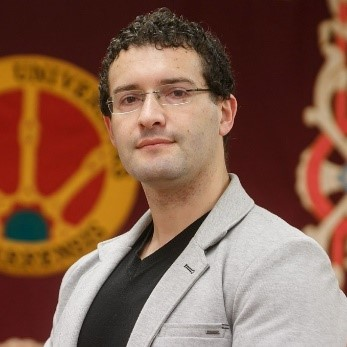Stress and Training Load Effects on Recovery, Well-Being and Sports Performance
A special issue of International Journal of Environmental Research and Public Health (ISSN 1660-4601).
Deadline for manuscript submissions: closed (30 April 2021) | Viewed by 131062
Special Issue Editors
Interests: football; soccer; match analysis; performance analysis; network analysis
Special Issues, Collections and Topics in MDPI journals
Interests: psychophysiology; heart rate variability; EEG; exercise; stress management; biofeedback; neurofeedback
Special Issues, Collections and Topics in MDPI journals
Interests: resistance training; plyometric training; interval training; neuromuscular performance optimization; muscle strength; muscle hypertrophy; soccer
Special Issues, Collections and Topics in MDPI journals
Special Issue Information
Dear Colleagues,
A growing body of literature demonstrates the influence of stress and training load on the recovery process and well-being of exercise practitioners and athletes. The dependent relationships between stress, training load, recovery, and well-being may constrain overall performance, considering the body of evidence. However, the magnitude of such relationships may vary according to many contextual factors and adaptability of the practitioners and athletes. Considering that more research should be done and published about such important topics, the aim of the Special Issue “Stress and Training Load Effects on Recovery, Well-Being and Sports Performance” is to publish high-quality original investigations or systematic reviews in the field of stress, training load, recovery, well-being and sports performance.
We look forward to receiving contributions related (but not limited) to the following topics: training load monitoring, stress and physiological responses during exercise or sports, recovery process after exercise, psychobiological changes after stress and/or training load. We welcome papers related to evidence of successful intervention strategies. All manuscripts will be peer reviewed by experts in the field by October 2020.
Prof. Filipe Manuel Clemente
Dr. Juan Pedro Fuentes García
Dr. Rodrigo Ramirez-Campillo
Guest Editors
Manuscript Submission Information
Manuscripts should be submitted online at www.mdpi.com by registering and logging in to this website. Once you are registered, click here to go to the submission form. Manuscripts can be submitted until the deadline. All submissions that pass pre-check are peer-reviewed. Accepted papers will be published continuously in the journal (as soon as accepted) and will be listed together on the special issue website. Research articles, review articles as well as short communications are invited. For planned papers, a title and short abstract (about 100 words) can be sent to the Editorial Office for announcement on this website.
Submitted manuscripts should not have been published previously, nor be under consideration for publication elsewhere (except conference proceedings papers). All manuscripts are thoroughly refereed through a single-blind peer-review process. A guide for authors and other relevant information for submission of manuscripts is available on the Instructions for Authors page. International Journal of Environmental Research and Public Health is an international peer-reviewed open access monthly journal published by MDPI.
Please visit the Instructions for Authors page before submitting a manuscript. The Article Processing Charge (APC) for publication in this open access journal is 2500 CHF (Swiss Francs). Submitted papers should be well formatted and use good English. Authors may use MDPI's English editing service prior to publication or during author revisions.
Keywords
- stress
- training load monitoring
- recovery
- well-being
- fatigue
- sleep
- delayed onset muscle soreness
- mood
- psychobiological changes
- immunological responses
- neuromuscular performance
- cognitive performance
Benefits of Publishing in a Special Issue
- Ease of navigation: Grouping papers by topic helps scholars navigate broad scope journals more efficiently.
- Greater discoverability: Special Issues support the reach and impact of scientific research. Articles in Special Issues are more discoverable and cited more frequently.
- Expansion of research network: Special Issues facilitate connections among authors, fostering scientific collaborations.
- External promotion: Articles in Special Issues are often promoted through the journal's social media, increasing their visibility.
- e-Book format: Special Issues with more than 10 articles can be published as dedicated e-books, ensuring wide and rapid dissemination.
Further information on MDPI's Special Issue polices can be found here.








